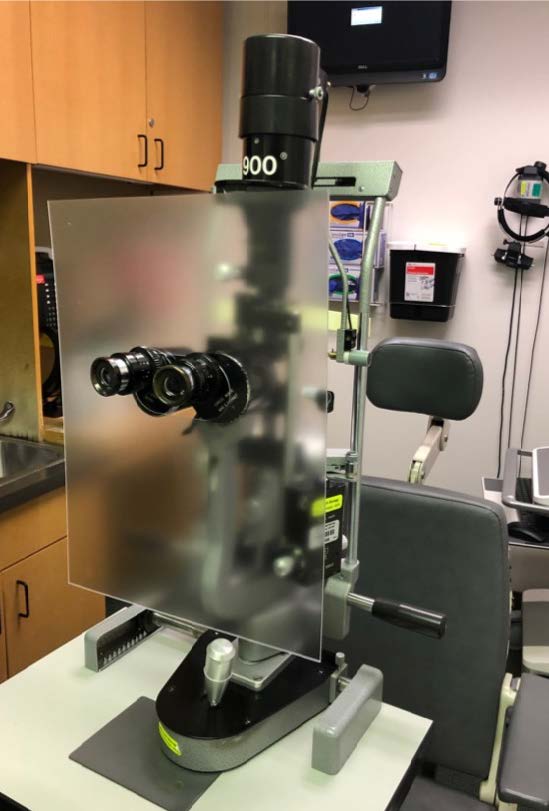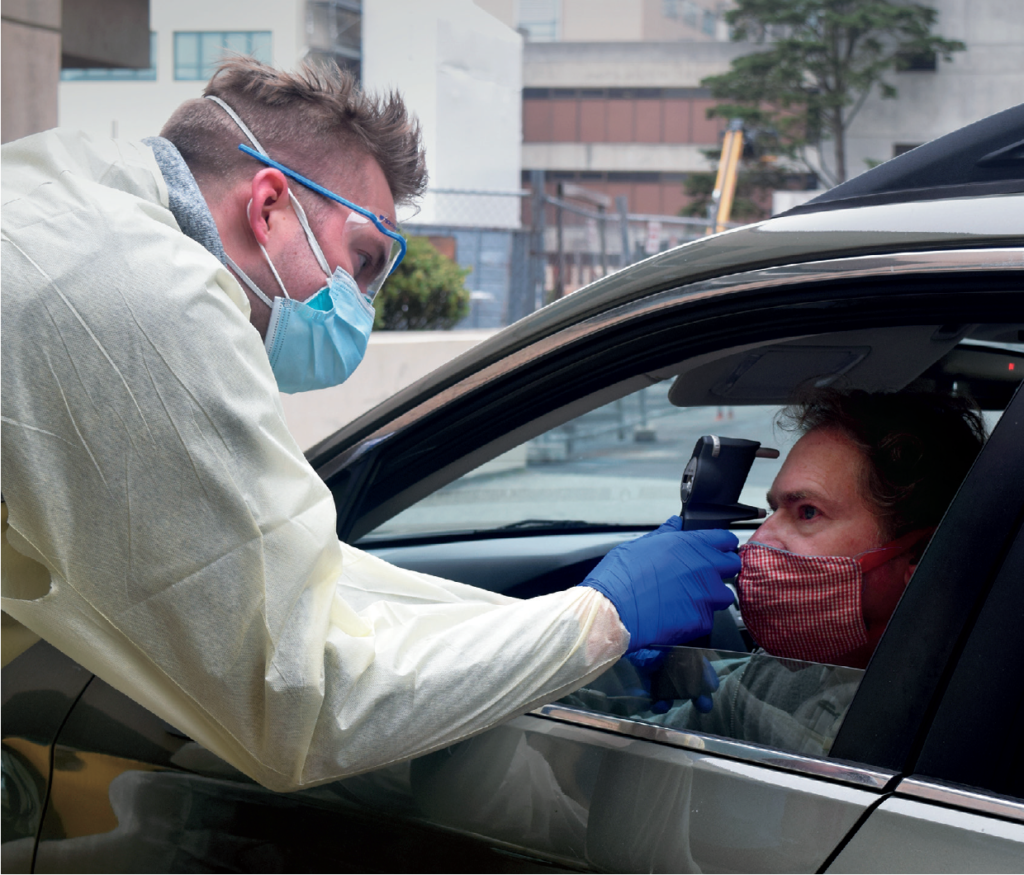To protect eye patients during the COVID-19 pandemic, UCSF Ophthalmology has implemented stringent safety measures. Innovative solutions are taking shape as clinical teams maximize precautions.

UCSF vision clinics have reopened for nonurgent patient care needs after adopting new policies and practices to protect both patients and practitioners.
“UCSF Ophthalmology is honored to be a trusted health partner during this crisis,” says M. Reza Vagefi, MD, medical director for the Department of Ophthalmology. “Our teams are making every effort to contain the spread of COVID-19 and to ensure that patients continue to receive the very best vision care.”
Precautions at All Eye Clinics
All UCSF vision clinics at the Department of Ophthalmology and Francis I. Proctor Foundation for Research in Ophthalmology follow the safety guidelines of the US Centers for Disease Control and Prevention.
Many new protocols are in place to reduce the risks of viral transmission. Patients can expect prescreening and rescreening for COVID-19, shorter appointments and waiting times, limits on nonessential visitors, and requirements for masks.
Protective plexiglass shields have been installed on every slit-lamp microscope, creating a physical barrier during face-to-face eye exams. UCSF’s Matthew Russell, MD, and his father-in-law, Lorne Dubin, kindly fabricated, installed, and donated the innovative shields.
The premises and all instruments undergo disinfection or sterilization each morning, between patients, and at night. All exam room surfaces, including chairs, chin rests, and door handles, are cleaned and disinfected.

Drive-Through Testing
UCSF glaucoma specialists are minimizing contact with drive-through tests to monitor eye pressure, also called intraocular pressure. The brief procedure involves gently touching a disposable, single-use tonometer tip to the surface of the eye while the patient remains inside his or her vehicle.
Telehealth Rising
Telehealth refers to medical triage, diagnosis, and care provided remotely. Pioneered for those living far from medical help, this touchless method reduces transmission risks. Clinicians now meet with patients via video, email, and phone to adjust medication, consult on upcoming surgeries, examine the external eye, and check vision. Brief clinical tests are paired with remote appointments to review test results and go over treatment plans.
